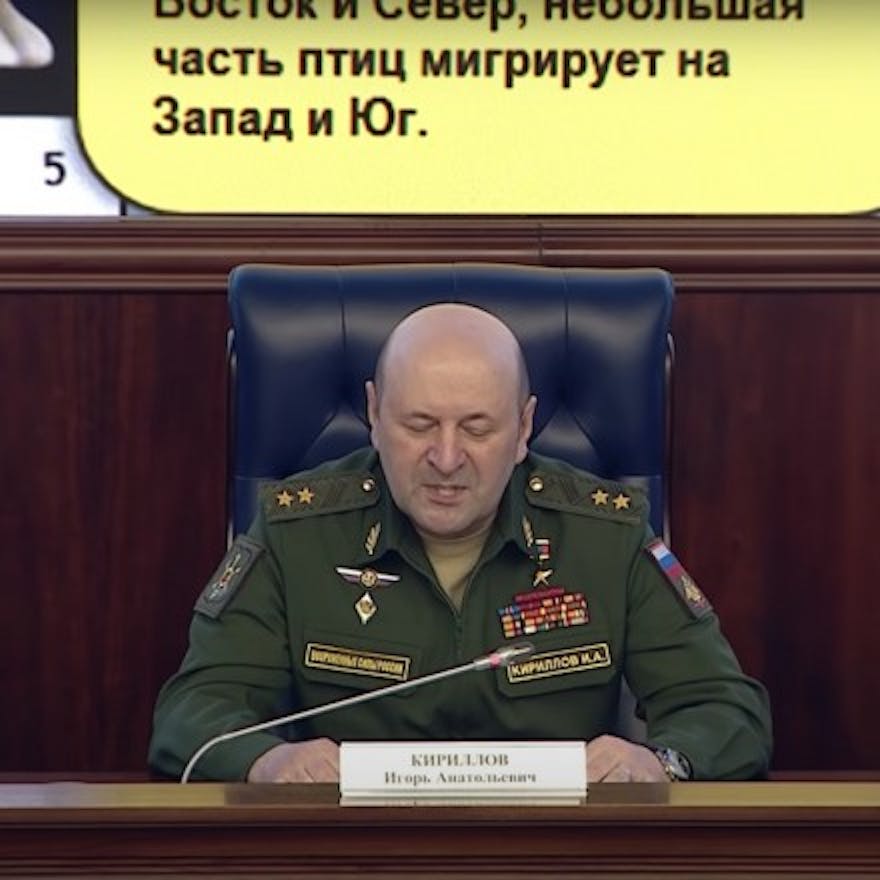U.S. Quietly Assists Ukraine With Intelligence, Avoiding Direct Confrontation With Russia
When a Russian drone briefly crossed into Poland, NATO allies threatened to shoot it down. What if the United States made a similar mistake?

March 17 2022, 3:48 p.m
> Crossing into Ukrainian airspace could turn the United States into a direct combatant in the conflict, heightening the risk of a nuclear confrontation. The same risk surrounds the provision of certain kinds of intelligence.
According to the former CIA official, the United States is only providing “finished” intelligence, meaning that it has already been processed by the U.S., as opposed to “raw” intelligence, like real-time video feeds or communications intercepts.
“The U.S. is using a variety of drone and fixed-wing collection assets to obtain tactical information of the battlefield,” the official said, adding that the intelligence is then passed on to the Ukrainians through a liaison officer. “But the U.S. is not providing real-time intelligence that would normally be provided to U.S. forces involved on the ground.”
But these distinctions are set on the United States’s own terms. And despite best efforts, there are always risks of accidents in which intelligence operations can run afoul of red lines. On Sunday, a Russian drone briefly crossed into Poland, a NATO member, leading to a warning from the alliance that it could respond with force — an alarming threat of direct confrontation with Russia. The drone was conducting the same kind of surveillance operations as the United States’s ISR aircraft do just along Ukraine’s borders.
While the Biden administration tries to support Ukraine without allowing the United States to become an active belligerent itself, Russia may not see it this way. Russian Deputy Foreign Minister Sergei Ryabkov has already warned that the military will consider weapon shipments to Ukraine as “legitimate targets.” On Sunday, Russia launched a deadly airstrike on a Ukrainian military facility just 15 miles from the Polish border, killing at least 35 and injuring 134 people, per Lviv officials. The Russian government called the facility — where NATO has trained Ukrainian forces and where U.S. troops had been stationed up until a few weeks ago — a “training center for foreign mercenaries” and a storage center for foreign weapons shipments.
In addition to the intelligence support, the U.S. and NATO are also providing substantial arms assistance, having reportedly sent Kyiv over 17,000 anti-tank weapons in less than a week. On Wednesday, Congress approved a bill for $13.6 billion in emergency assistance for Ukraine, containing both security and humanitarian aid. Biden announced the same day that the U.S. is sending $800 million in more weapons to Ukraine, including anti-aircraft systems, anti-armor systems, small arms, machine guns, shotguns, grenade launchers, and drones.

Pallets of ammunition, weapons, and other equipment bound for Ukraine wait to be loaded at Dover Air Force Base in Delaware on Feb. 28, 2022.
Photo: Tech. Sgt. J.D. Strong II/U.S. Air Force
Most Read
An MQ-9 drone pilot with the U.S. military also told The Intercept that Reapers had been deployed to the region. He said the U.S. was using MQ-9 services leased from private contractors before withdrawing them and replacing with government assets, which he said have been slower to stand up. NBC News reported Tuesday that the administration is also considering sending small kamikaze drones called Switchblades.
The U.S. has particular experience with this type of indirect weapons and intelligence assistance against Russia, having previously sent arms to Syrian rebels combating the Russian-backed regime of President Bashar al-Assad. Although Biden has called for an end to Saudi Arabia’s U.S.-backed war in Yemen, the Defense Department also gives intelligence and weapons support to the Saudi regime, which is engaged in a brutal offensive that has resulted in the world’s worst humanitarian crisis.
The United States amplifies data its intelligence can confirm, while discrediting what it cannot validate, in order to support partners in the region without being considered an active combatant, a retired U.S. Air Force general with experience leading operations in the Middle East told The Intercept. If the U.S. has information that a production facility also serves as a prison, for example, it will tell its partner that the target has other uses to be considered before attacking. (Two other retired military officers confirmed that such information-sharing functions this way.)
. . .
Beyond these measures, the United States’s intelligence involvement in Ukraine has also included a secret CIA training program, Yahoo News reported on Wednesday. Under the program, following Russia’s annexation of Ukraine’s Crimea peninsula in 2014, a small group of CIA paramilitary officers were sent into the country to train the Ukrainians in the use of Javelin anti-tank missiles, sniper techniques, and covert communications. The report noted that the Biden administration had since ended the program, following concerns that its authorities might be too broad, and pulled all CIA personnel out of Ukraine last month under the threat of a Russian invasion. Along similar lines, The Intercept reported last week that shortly after Biden’s inauguration, his CIA Director William Burns sought to temporarily halt certain covert operations related to Russia that U.S. officials considered risky or provocative.
House Armed Services Committee Chair Adam Smith, D-Wash., has stressed that it is essential that the U.S. does not provide “real-time targeting” intelligence to Ukraine. “We have to help Ukraine in every way we can without widening the war and stumbling into World War III,” he said Wednesday on CNN. . ."







No comments:
Post a Comment